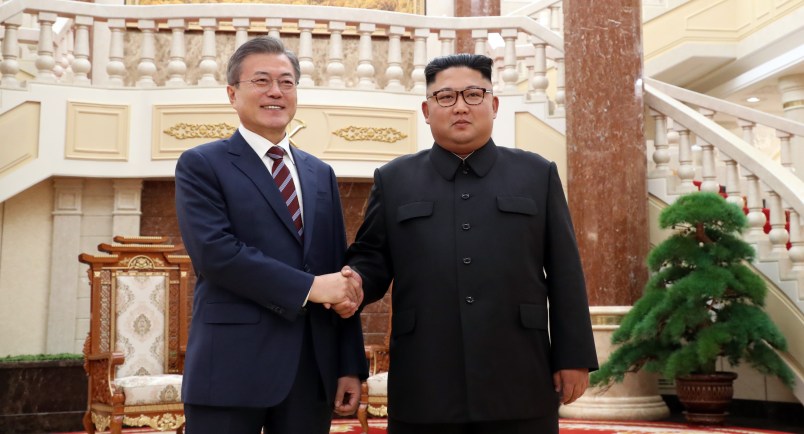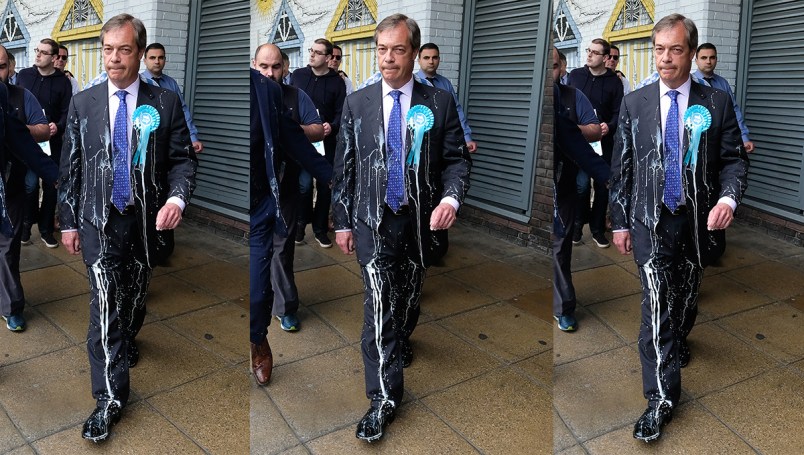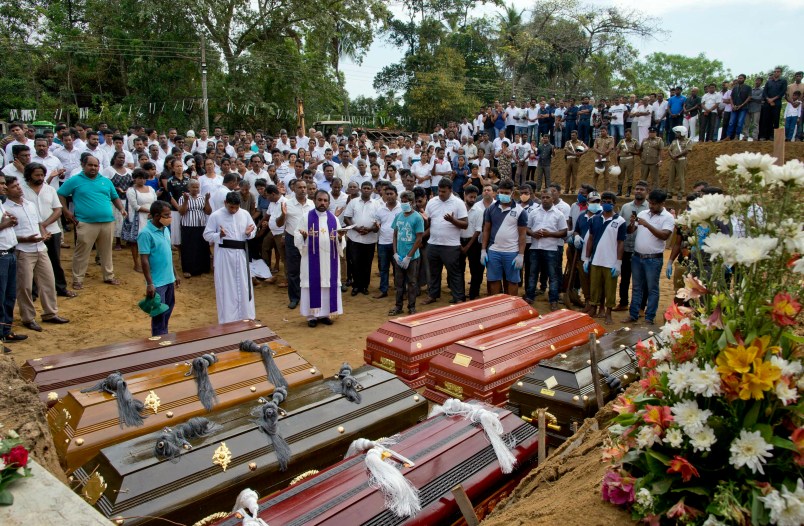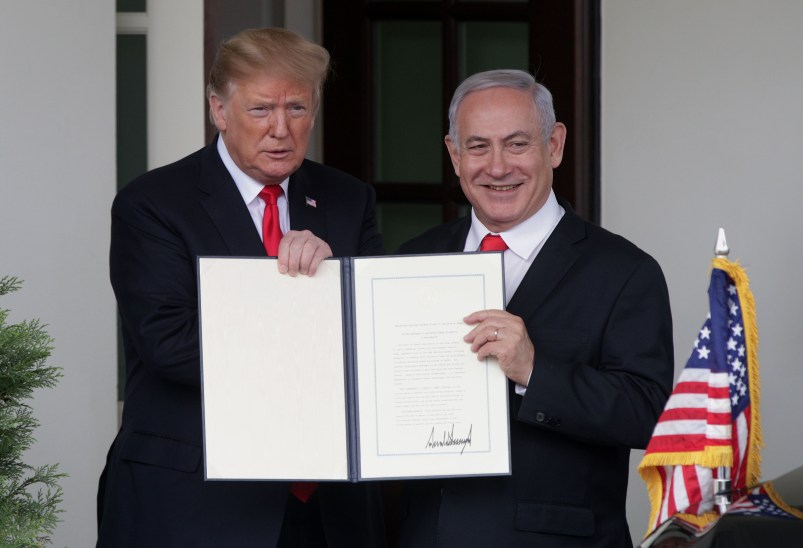PYONGYANG, North Korea (AP) — South Korean President Moon Jae-in began his third summit with North Korean leader Kim Jong Un on Tuesday with possibly his hardest mission to date — brokering some kind of compromise to keep North Korea’s talks with Washington from imploding and pushing ahead with his own plans to expand economic cooperation and bring a stable peace to the Korean Peninsula.
Kim gave the South Korean president an exceedingly warm welcome, meeting him and his wife at Pyongyang’s airport — itself a very unusual gesture — then riding into town with Moon in an open limousine through streets lined with crowds of North Koreans, who cheered and waved the flag of their country and a blue-and-white flag that symbolizes Korean unity.
The made-for-television welcome is par for the course for Moon’s summits with Kim.
Hours after his arrival, Moon began an official summit with Kim at the ruling Workers’ Party headquarters. The two were joined by two of their top deputies — spy chief Suh Hoon and presidential security director Chung Eui-yong for Moon, and Kim Jong Un’s powerful sister, Kim Yo Jong, and senior Workers’ Party official Kim Yong Chol for the North Korean leader, according to Moon’s office.
At the start of their meeting, Kim thanked Moon for brokering a June summit with U.S. President Donald Trump.
“It’s not too much to say that it’s Moon’s efforts that arranged a historic North Korea-U.S. summit. Because of that, the regional political situation has been stabilized and more progress on North Korea-U.S. ties is expected,” Kim said, according to South Korean media pool reports and Moon’s office.
Moon responded by expressing his own thanks to Kim for making a “bold decision” in a New Year’s speech to open a new era of detente and send a delegation to the South Korean Winter Olympics in February.
The results of the talks weren’t immediately available. Seoul officials earlier said they would focus on how to achieve denuclearization of the Korean Peninsula, decrease military tensions along their border and improve overall ties. The North’s media said the talks would reaffirm their commitment to Korean peace, unity and prosperity.
During a conversation at the Paekhwawon guest house where Moon was to stay, Kim said North Koreans hope diplomacy will yield positive results. “I think it was our people’s wish that we come up with good results as fast as we can,” Kim said, according to the media pool reports.
Moon responded that “Our hearts are fluttering, but at the same we have heavy hearts,” and added, “We have built trust and friendship between us, so I think all will be well.”
The two are to meet again on Wednesday.
More than in their previous encounters, when the mere fact of meeting and resuming a dialogue was seen as a major step forward, Moon is under pressure to leave Thursday with some concrete accomplishments.
One of Moon’s objectives — and one that also interests Kim — was clear from the people he took with him. Traveling on Moon’s government jet was Samsung scion Lee Jae-yong and other business leaders, underscoring Moon’s hopes to expand cross-border business projects. Currently, however, all major joint projects between the Koreas are stalled because of U.S.-led sanctions.
But the nuclear issue was sure to cast a shadow over negotiations on joint projects.
Before leaving Seoul, Moon vowed to push for “irreversible, permanent peace” and for better dialogue between Pyongyang and Washington.
“This summit would be very meaningful if it yielded a resumption of North Korea-U.S. talks,” Moon said Tuesday just before his departure. “It’s very important for South and North Korea to meet frequently, and we are turning to a phase where we can meet anytime we want.”
But as Moon arrived, the North’s main newspaper lobbed a rhetorical volley at Washington that could make Moon’s job all the more delicate, blaming the United States alone for the lack of progress in denuclearization talks.
“The U.S. is totally to blame for the deadlocked DPRK-U.S. negotiations,” the Rodong Sinmun said in an editorial, using the initials of the North’s formal name, the Democratic People’s Republic of Korea.
It said Washington is “stubbornly insisting” that the North dismantle its nuclear weapons first, an approach “which was rejected in the past DPRK-U.S. dialogues,” while failing to show its will for confidence-building “including the declaration of the end of war which it had already pledged.”
While signaling his willingness to talk with Washington, Kim’s strategy has been to try to elbow the U.S. away from Seoul so that the two Koreas can take the lead in deciding how to bring peace and stability to their peninsula. North Korea maintains that it has developed its nuclear weapons to the point that it can now defend itself against a potential U.S. attack, and can now shift its focus to economic development and improved ties with the South.
Rarely do the North Korean official media even mention the word denuclearization.
Talks between the United States and North Korea have stalled since Kim’s meeting with Trump in Singapore in June.
North Korea has taken some steps, like dismantling its nuclear and rocket-engine testing sites, but U.S. officials have said it must take more serious disarmament steps before receiving outside concessions. Trump has indicated he may be open to holding another summit to resuscitate the talks, however.
For Kim, the timing of this week’s summit is good.
North Korea just completed an elaborate celebration replete with a military parade and huge rallies across the country to mark its 70th anniversary. China, signaling its support for Kim’s recent diplomatic moves, sent its third-highest party official to those festivities. That’s important because China is the North’s biggest economic partner and is an important political counterbalance to the United States.
To keep expectations from getting too high, Moon’s chief of staff, Im Jong-seok, said it’s “difficult to have any optimistic outlook” for progress on denuclearization during the summit. But he said he still expects the summit to produce meaningful agreements.
Some progress along those lines is already underway.
South Korea last week opened a liaison office in the North’s city of Kaesong, near the Demilitarized Zone. Another possible area of agreement could be on a formal statement on ending the Korean War, which was halted in 1953 by what was intended to be a temporary armistice. Military officials have discussed possibly disarming a jointly controlled area at the Koreas’ shared border village, removing front-line guard posts and halting hostile acts along their sea boundary.
Moon is the third South Korean leader to visit North Korea’s capital for summits, but the first since 2007.






